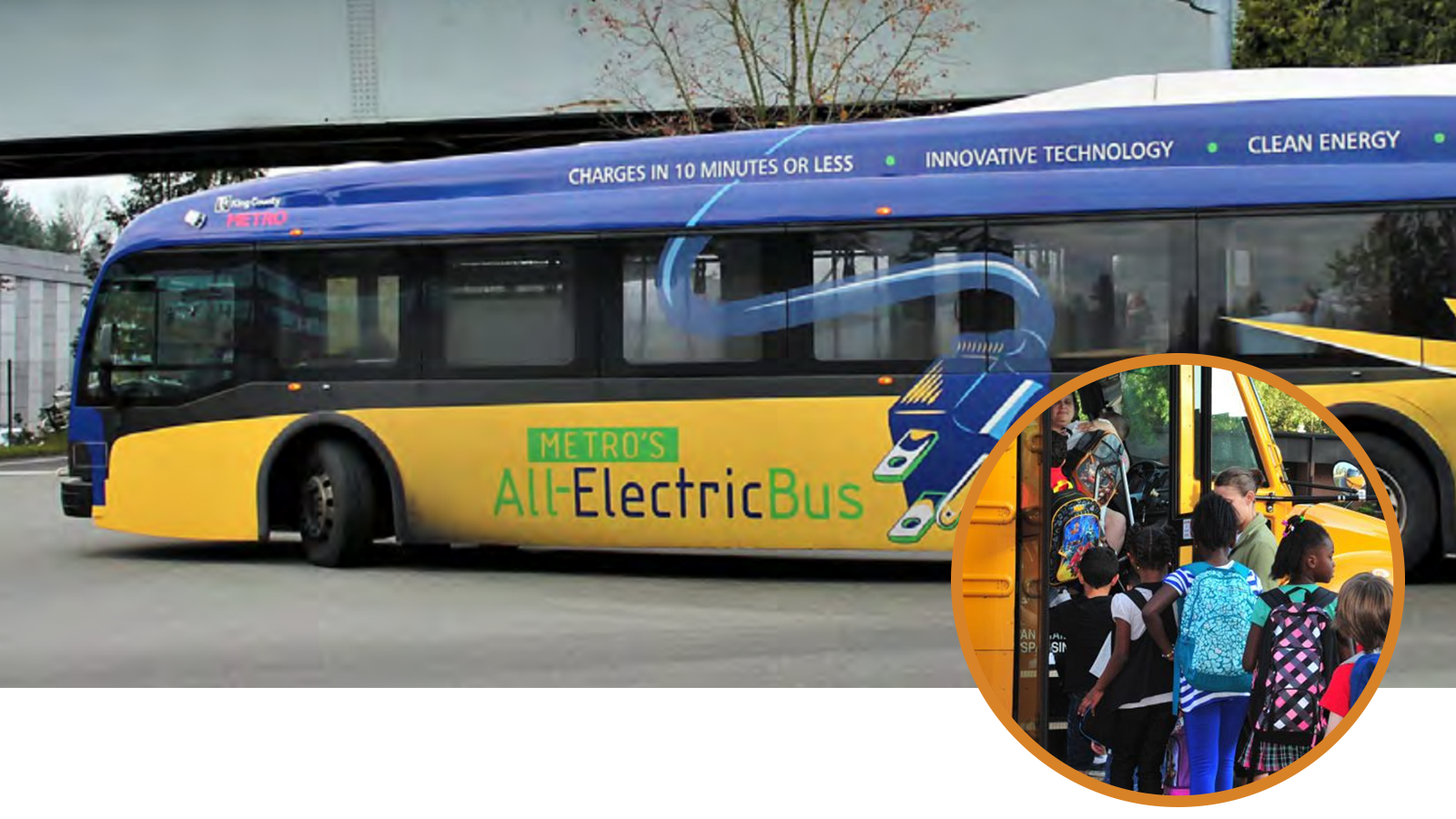A promise to our kids: school buses and a healthier planet
Kids need to be exposed to as little air pollution as possible. A key way that we can preserve the promises of the future is ensuring that the buses they take to and from school and field trips are powered by electricity and not fossil fuels. Xcel Energy has released their Transportation Electrification Plan (TEP), and this plan has a proposal to invest over $2 million in helping schools make the switch from dirty gas-powered school buses to clean electric school buses.

Kids need to be exposed to as little air pollution as possible because they are smaller and still growing. According to the American Academy of Allergy Asthma & Immunology, air pollution is linked to higher rates of asthma and other respiratory illnesses. We see promise in our kids, and we cannot take it away by polluting our air, damaging their health, and ruining the planet that we are borrowing from them. While there’s debate over who said the following quote, the sentiment rings true today: “We don’t inherit the earth from our parents, we borrow it from our children.”
A key way that we can preserve the promises of the future is ensuring that the buses they take to and from school and field trips are powered by electricity and not fossil fuels.
If we snapped our fingers and converted every gas-powered school bus in the country into an electric school bus, we would eliminate 5.3 million tons of emissions each year. That elimination means less climate change pollution and less health-harming pollution in our neighborhoods. In many places, kids just use school buses to get to and from school, but in other places, like Denver, kids also use public transportation to get to and from school. If we snapped our fingers and made sure every transit bus in Denver was powered by cleaner electricity, we would eliminate 47,000 tons of greenhouse gas emissions each year – the equivalent of taking 9,000 cars off the road. Converting buses that children take to school will help our planet and clean the air our kids breathe in our neighborhoods.
The idea of electric school buses seems brand new, but some cities have been using them for years. Twin Rivers, California, has used electric school buses since 2017 and has reported saving up to 80% on fuel for the buses and over $15,000 per year on energy and maintaining them. In 2015, three different communities in Massachusetts (Cambridge, Amherst, and Concord) used electric school buses as part of a pilot program from the Massachusetts Department of Energy Resources. They experienced lower cost savings than originally expected and all three communities decided to keep their buses after the pilot program was over.
Carrying our kids in electric school buses is better for the planet and our kids’ health, and saves school districts money in the long run. So, why don’t we immediately convert every school bus from gas-powered to electric? Electric school buses cost more to purchase than gas-powered school buses. According to the Clinton Global Initiative V2G EV School Bus Working Group, an electric school bus costs about $120,000 more up front than a gas-powered bus. School districts have never had lots of extra money, and their budgets have gotten even more constrained due to COVID-19.
We can’t afford to wait for school districts to save the money needed to transition away from the health harming pollution emitted by gas-powered school buses. When school districts are purchasing new buses they need help paying the extra cost of a new electric school bus. One solution to this problem is to have other entities, like utilities, help schools pay for electric school buses. Utilities can also help give school districts the technical expertise to maximize the yearly fuel and maintenance savings from going electric. In Colorado, Xcel Energy has released their Transportation Electrification Plan (TEP), and this plan has a proposal to invest over $2 million in helping schools make the switch from dirty gas-powered school buses to clean electric school buses.
Xcel’s TEP needs to be approved by the Public Utilities Commission this year, and we need to protect this part of the plan and expand it so we can maximize the number of school districts that can take advantage of Xcel’s program. One way to do this – school districts should work with Xcel and express interest in getting funding for electric school buses to show the high need and demand. Additionally, the Denver Metro Area’s Regional Transportation District (RTD) should look at its bus routes and determine which ones serve school children. Those buses should receive funding from Xcel’s school bus electric bus conversion program too.
As I said earlier, converting to electric-powered school buses really matters. Air pollution is drastically altering the Colorado way of life. Exhaust and pollution from vehicles fuels climate change leading to less water for drinking and a higher risk of wildfires. In Colorado, transportation is the largest source of greenhouse gas emissions, which causes climate change. Due to climate change, weather patterns are becoming more extreme, and formerly rare weather events are becoming more common.
And a lot of pollutants that come from tailpipes–nitrous oxide, carbon monoxide, and particulate matter–have been connected to asthma and cancers. To help our planet and ourselves, we need to clean our air, and we need to start with transportation, the biggest polluter in the state.
Our kids fill us with ideas of promise and hope for the future. We cannot instill hope and promise in them while taking away their clean air and polluting the planet. We need to see solutions like electric school buses as ways we can “borrow” the earth from them in a more responsible way and implement those solutions as soon as possible.